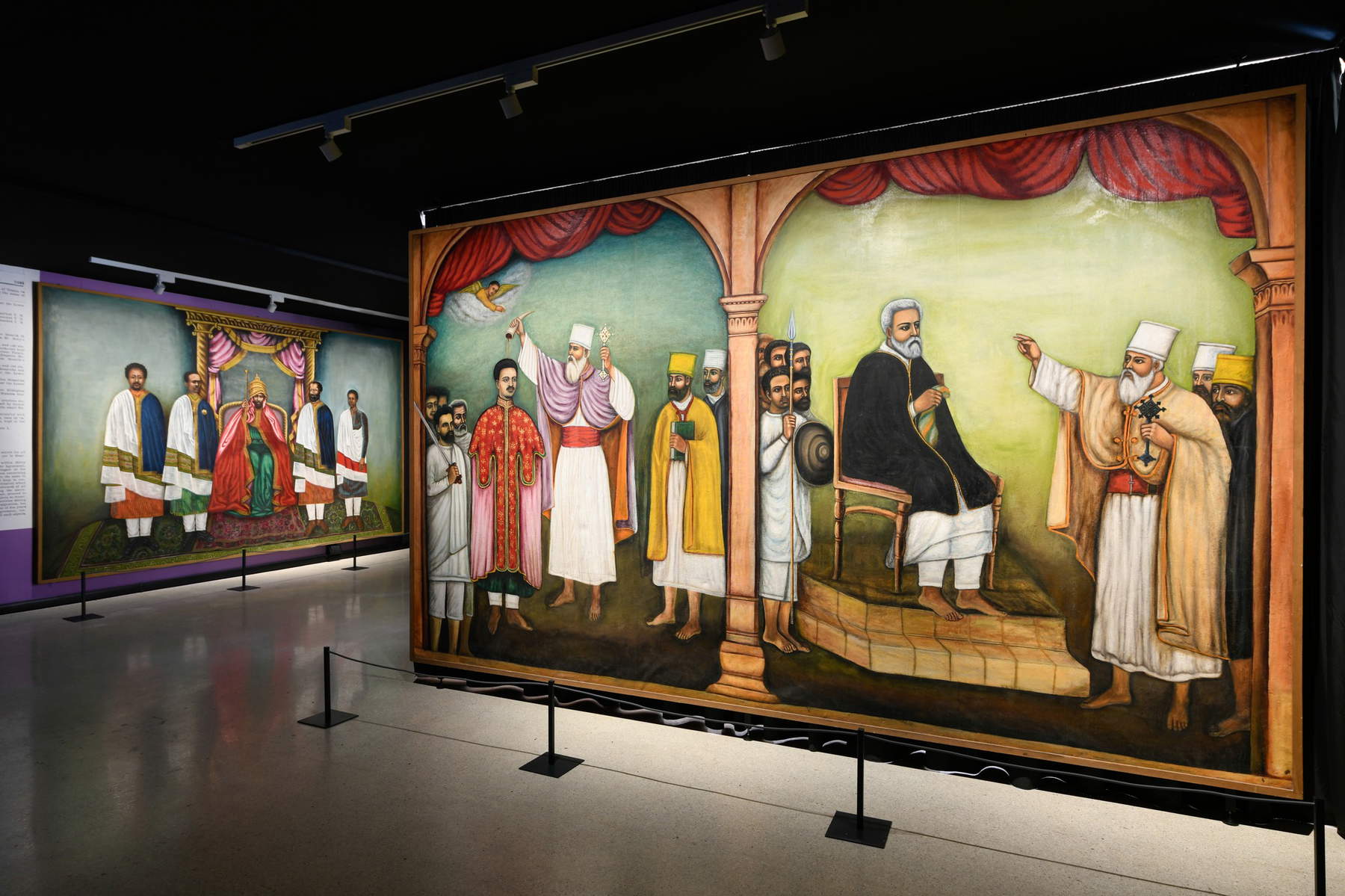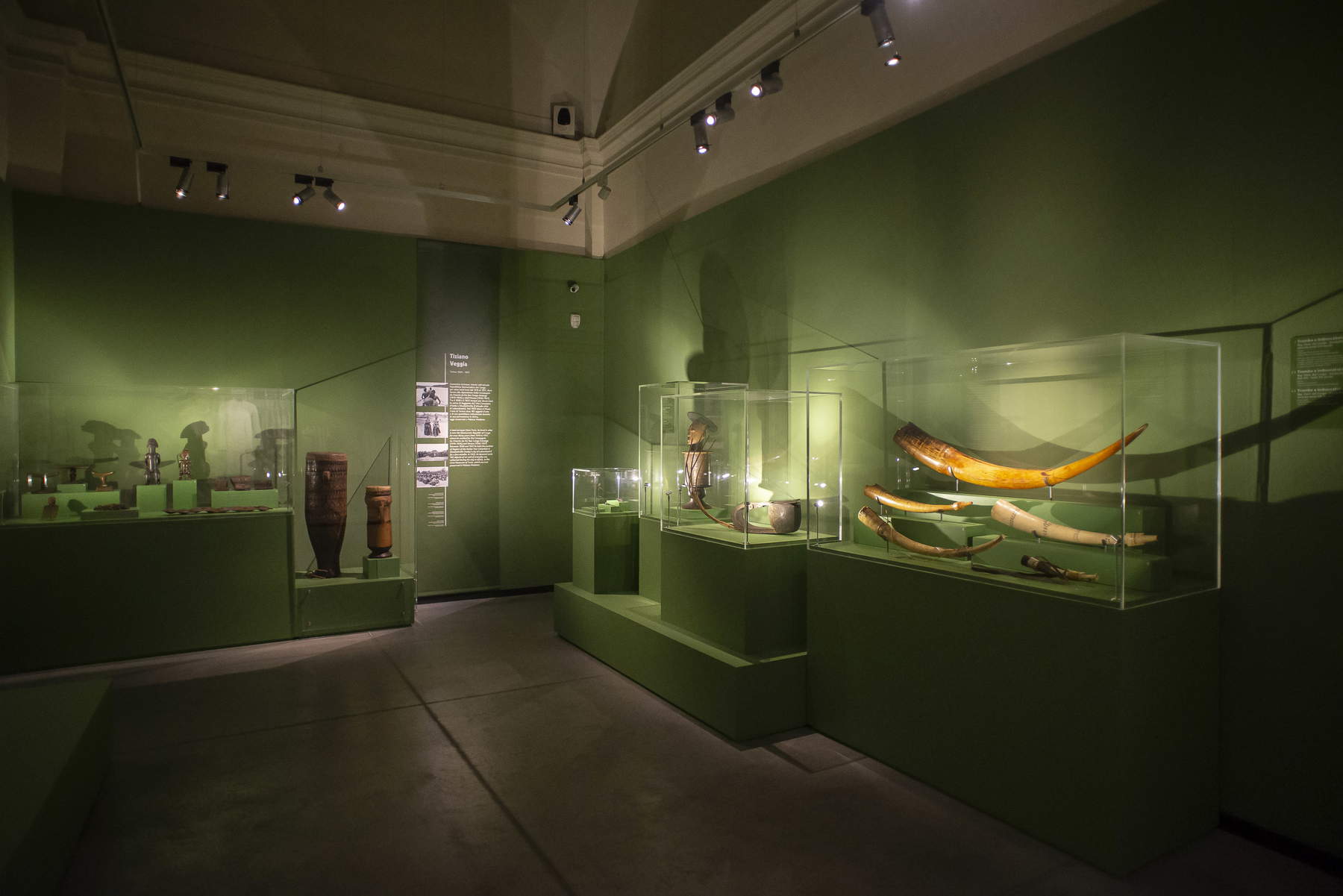Awareness is growing throughout the world of the violence inherent in the colonial policies that for centuries Europe imposed on a very large part of the non-European world, invading, impoverishing and irreparably disrupting societies endowed with ancient and refined social organizations under the guise of their supposed primitivism. With considerable delay and much resistance, even Italy is beginning to rediscover long-repressed fragments of the past that for better or worse links us to Africa. In this arduous journey, African objects that have come to our country - tangible witnesses of those experiences - play a fundamental role. Evidence of this is provided by some recent initiatives such as the exhibition entitled The Museum of Opacities (opened in Rome on June 8, 2023), with which the Museum of Civilizations has launched a program of critical reorganization of the collections of the former Colonial Museum, and the exhibition Africa. The Forgotten Collections (Turin, Royal Museums, Oct. 27, 2023 - Feb. 25, 2024), which brought back some 150 African works from the storerooms of the Royal Armory, some of the Savoy Residences as well as the Museum of Anthropology and Ethnography of the University of Turin (closed to the public for 40 years).
The many valuable collections consisting of thousands of African objects in Italy testify to a past dense with intense exploratory, diplomatic and missionary and later military and colonial relations that our country had with this continent. The neglect and abandonment in which most of these collections find themselves reflect the vast removal that has affected our colonial past more generally. On this theme in 2011 Luca Guadagnino had made Inconscio italiano, an enlightening documentary that traces in a psychoanalytic key the trauma of the colonial past by correlating its removal - countered by the commitment and courage of historians such as Angelo del Boca and those who followed him - to the political confusion that long marked the postwar period.


But slowly this removal seems to be giving way to reworking. What triggered the reversal? The change stems primarily from the transformation taking place in Italian society as a result of migration flows. Millions of people from non-European countries, many of them of African descent, have caused a radical change in the cultural scenario, imposing a new vision of global relations with which museums are also beginning to deal. In this renewed social fabric, knowledge of the history of non-European civilizations and their artistic traditions appears fundamental to equitable, democratic and inclusive social development of the diverse components that animate multicultural society. At the same time, the complex trajectories conveyed by the biography of objects-if properly investigated and documented-lay bare the history of global geopolitical relations and in many cases the responsibilities and faults European nations have been guilty of in the past.
Italy is the repository of a multiplicity of treasures belonging to the “cultural heritages of others,” arrived through complex acquisitive events sometimes marked by the violence of colonization. It is an important, partly uncomfortable legacy that needs to be confronted in the face of an increasing presence of diasporic communities that often come from the same regions of origin of the objects. Moreover, the need for new models of more equal relations with the Global South is also inevitable in the international arena, an idea strongly expressed by Giorgia Meloni with the so-called “Mattei Plan for Africa.” On both the domestic and international fronts, the goal of ushering in a “new relational ethic” (B. Savoy, F. Sarre, Report on the Restitution of African Cultural Heritage, 2018) with African countries and diasporic Afro-descendant communities thus appears, at least on paper, to be widely shared. But it is a difficult goal to achieve.


African objects in Europe are an excellent test case because of the breadth of their symbolic meanings and the visibility that museum exhibitions can give to the subject. In this sense, the restitution debate has functioned as a pathfinder, showing Western public opinion the predatory essence of colonialism. However, history teaches us how complex and ambivalent the colonial phenomenon is, irreducible to easy ideologisms. Similarly, only the documented and timely reconstruction of the provenance of each object can shed light on the circumstances and significance of its acquisition. This means that museums should commit themselves to producing documentation about the African objects in their possession, making it available in an open form according to a principle of fundamental transparency. In Italy, despite the steady increase of the General Catalogue of Cultural Heritage website, we are still a long way from widely sharing information about non-European heritage.
Therefore, interventions by contemporary African or Afro-descendant artists committed to rereading this heritage from a decolonial perspective are welcome. But even more urgent is research work on the collections that sheds light on the “biography” of the objects, with all that may follow. In parallel, it is necessary to enhance this heritage for the benefit of diasporic communities, for whom it constitutes an anchor to their cultures of origin and a vehicle of knowledge and recognition vis-à-vis the larger society. Taken together, these processes can only take place within the framework of innovative and equal forms of cooperation between Italian and African cultural institutions, as well as with the realities of the diaspora. Recognizing the wounds of the past is the first step in healing them, creating the basis for a more equitable, democratic and mutually enriching sharing of the most diverse expressions of human creativity.
This contribution was originally published in No. 23 of our print magazine Finestre Sull’Arte on paper. Click here to subscribe.
Warning: the translation into English of the original Italian article was created using automatic tools. We undertake to review all articles, but we do not guarantee the total absence of inaccuracies in the translation due to the program. You can find the original by clicking on the ITA button. If you find any mistake,please contact us.